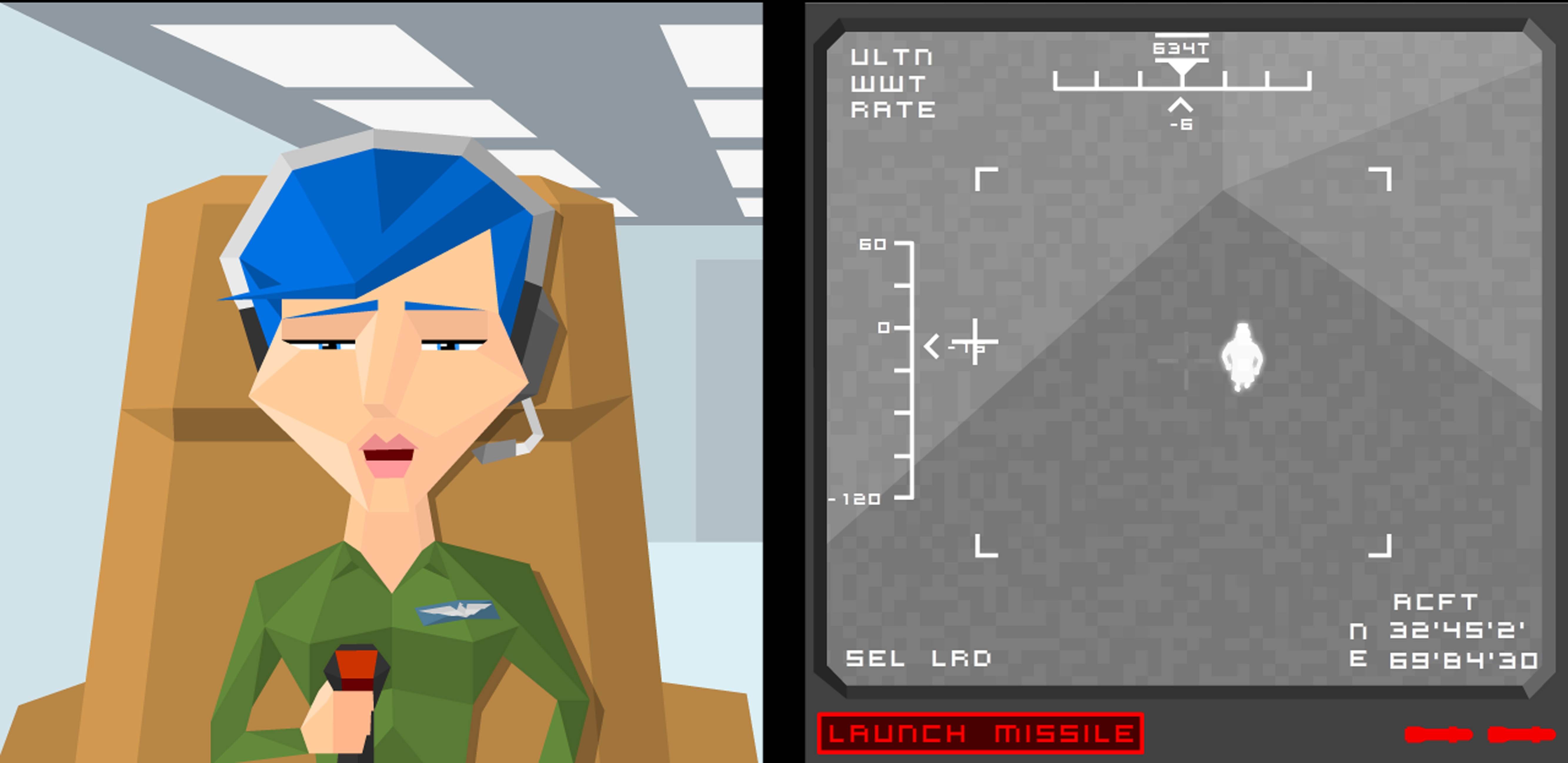Unmanned (Molleindustria, 2012) is a recent piece by Molleindustria, an hybrid between a computer game and a digital narrative – similar in some ways to what designer Paolo Pedercini already attempted in Every Day the Same Dream (Molleindustra, 2011). It is a slow-paced, reflexive game – more like a piece of interactive art than an entertainment product – that tells the story of an American soldier supervising drones deployed in the Middle-East.

The rhetorics and the narrative of Unmanned are centered around games and reality: it is a piece depicting a soldier who uses a game-like interface to control a drone on the other side of the world, pushing simple buttons to cause lethal outcomes – at the same time, the player uses another simple interface to control the game.

As a semiotician, one of the first things that I noticed is the clever use of diegesis and embrayage/debrayage. To cut short a very long story, we may say that those are semiotic tools to build different levels of fictional worlds – in a similar way to what it’s shown in Christopher Nolan’s movie “Inception”. We can call embrayage and debrayage the literary techniques to describe entering and exiting different layers of narrative reality.

Indeed, Unmanned features some interesting embrayages: the protagonist’s “entering” the point of view of the drone, as well as his dream. But, to make things more interesting, the player himself “enters” the protagonist’s reality and, through him, they control the drone.
It is a clever chain of control that challenges and problematize agency and the perception of reality. Who is controlling what in this game? Who controls the drone? and what difference is there between the dream sequence and the war sequence? And, again, what’s the difference between the player and the protagonist? and between the player and a real drone pilot?
Leonardo DiCaprio’s character from Inception may find something very familiar in this game.
More reading
Greg Costikyan on Unmanned
An interview to Paolo Pedercini
Walkthrough and review
